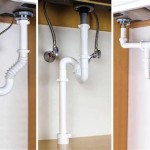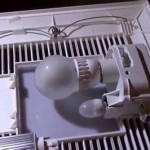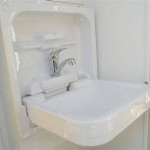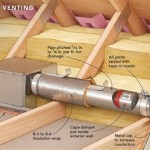Why Does My Bathroom Sometimes Smell Like Sewer?
The unpleasant and often alarming odor of sewer gas in a bathroom is a common concern for homeowners. The smell, often described as rotten eggs or decaying matter, indicates a potential problem within the plumbing system. While occasional minor odors might be easily remedied, persistent or strong sewer gas smells warrant investigation to prevent potential health risks and property damage. Understanding the underlying causes of this issue is crucial for effective diagnosis and resolution.
Sewer gas is a complex mixture of gases produced during the decomposition of organic waste materials. These gases predominantly include methane, hydrogen sulfide, ammonia, carbon dioxide, and nitrogen. Hydrogen sulfide is the primary culprit behind the characteristic rotten egg smell. While at low concentrations, these gases are typically not immediately harmful, prolonged exposure or high concentrations can pose health hazards. Methane, for example, is flammable and can create an explosion risk in confined spaces. Hydrogen sulfide, at higher concentrations, can cause respiratory irritation, nausea, headaches, and even be fatal.
Therefore, identifying the source of the sewer gas smell in a bathroom is not merely about eliminating an unpleasant odor; it is about ensuring a safe and healthy environment. This requires a systematic approach to identify potential plumbing malfunctions and implement appropriate corrective measures. Ignoring the problem can lead to more serious issues, including structural damage from leaks and the potential for health problems.
Dried-Out or Defective P-Traps
One of the most frequent causes of sewer gas odors in a bathroom is a problem with the P-traps. A P-trap is a U-shaped pipe located under sinks, bathtubs, and showers. Its primary function is to trap a small amount of water that acts as a barrier, preventing sewer gases from escaping into the living space. The water seal within the P-trap effectively blocks the passage of gases from the drainpipe into the bathroom.
If a P-trap dries out, this protective water barrier is lost, and sewer gasses can freely flow into the bathroom. This is particularly common in bathrooms that are not used frequently. For instance, a guest bathroom that remains unused for extended periods is prone to P-trap evaporation. Similarly, floor drains, often overlooked, can also suffer from evaporation if they are not regularly supplied with water.
The solution to a dried-out P-trap is generally simple: run water down the drain for a few minutes to refill the trap. If the odor persists after refilling the P-trap, there might be a more serious issue, such as a leak or a defect in the P-trap itself. Cracks or loose connections in the P-trap can compromise its ability to hold water, leading to continuous evaporation and subsequent sewer gas leaks. In such cases, a thorough inspection of the P-trap is necessary, and replacement might be required.
Furthermore, ensure the P-trap is properly installed and vented. Improper venting can create a siphon effect, pulling water out of the P-trap. This issue can be more complex to diagnose and might require the expertise of a qualified plumber. Correcting the venting issue will prevent the recurrent draining of the P-trap and eliminate the sewer gas odor.
Issues with Plumbing Vents
The plumbing vent system is a critical component of a building's drainage system. It consists of a network of pipes that extend from the drain lines up through the roof, allowing air to enter the plumbing system. This airflow performs two essential functions: it prevents a vacuum from forming in the drainpipes, which could siphon water out of the P-traps, and it provides a pathway for sewer gases to escape outside the building instead of into the living spaces.
A blockage within the vent system can disrupt this crucial airflow and cause sewer gases to be diverted back into the building. Common causes of vent blockages include bird nests, leaves, debris, or even snow accumulation on the roof. These obstructions can effectively seal off the vent pipe, preventing the proper release of sewer gases.
Signs of a blocked plumbing vent often include gurgling sounds from drains when fixtures are used, slow draining of sinks or bathtubs, and, of course, the presence of sewer gas odors. If these symptoms are present, it is crucial to inspect the vent openings on the roof for any visible obstructions. Removing the blockage can often resolve the issue; however, caution should be exercised when working on the roof, and professional assistance may be necessary for safety reasons.
In some cases, the vent pipe may be improperly designed or installed, leading to inadequate ventilation. This can result in a persistent negative pressure within the drainpipes, drawing water out of the P-traps. Correcting these design or installation flaws can be a more complex undertaking, often requiring modification of the plumbing system by a qualified plumber to ensure proper venting.
Another potential issue is a cracked or damaged vent pipe within the walls or attic. These leaks can allow sewer gases to escape into the building, even if the vent system is otherwise functioning correctly. Identifying these leaks can be challenging, as they are often concealed within the building structure. Professional leak detection methods, such as smoke testing, may be necessary to pinpoint the location of the leak.
Sewer Line Problems
Problems with the main sewer line can also manifest as sewer gas odors in the bathroom. The main sewer line is the primary drainpipe that carries wastewater from the house to the municipal sewer system or a septic tank. Damage to this line, such as cracks, leaks, or blockages, can allow sewer gases to escape and migrate into the building, often through the plumbing fixtures in the bathroom.
Tree root intrusion is a common cause of sewer line damage. Tree roots are attracted to the moisture and nutrients within the sewer line and can gradually penetrate the pipe, causing cracks and blockages. Over time, these roots can completely obstruct the flow of wastewater and lead to sewer backups and gas leaks.
Other potential causes of sewer line problems include ground shifting, corrosion, or the accumulation of debris within the pipe. Ground shifting can put stress on the sewer line, causing it to crack or break. Corrosion can weaken the pipe material, making it more susceptible to damage. The accumulation of grease, hair, and other debris can create blockages that impede the flow of wastewater and contribute to sewer gas buildup.
Signs of a sewer line problem can include multiple slow-draining fixtures, frequent toilet backups, and the presence of sewage in the basement or yard. A sewer gas odor in the bathroom, particularly when combined with these other symptoms, is a strong indicator of a potential sewer line issue.
Diagnosing sewer line problems typically requires specialized equipment, such as a sewer camera. A sewer camera is a small, flexible camera that can be inserted into the sewer line to inspect its condition. This allows plumbers to identify cracks, leaks, blockages, and other damage without having to excavate the pipe. Once the problem is identified, appropriate repairs can be made, such as patching the damaged section of pipe, replacing the entire sewer line, or clearing the blockage.
Addressing sewer line problems promptly is essential to prevent further damage and health hazards. Ignoring these issues can lead to more extensive repairs, potential property damage, and exposure to harmful sewer gases. Therefore, if there is suspicion of a sewer line problem, it is crucial to contact a qualified plumbing professional for a thorough inspection and repair.
In conclusion, identifying the source of sewer gas odors in a bathroom requires a systematic approach, considering potential issues with P-traps, plumbing vents, and the main sewer line. Understanding the function of each of these components and recognizing the signs of potential problems is crucial for effective diagnosis and resolution. While some issues, such as dried-out P-traps, can be easily remedied, more complex problems may require the expertise of a qualified plumbing professional to ensure a safe and healthy environment.

Why Does Bathroom Smell Like Sewage Crystal Blue

Unused Bathroom Smells Like A Sewer Causes And Solutions

Sewer Smell In Bathroom Identify And Eliminate The Odor

Five Reasons Your Bathroom Smells Like A Sewer The Plumbette
What To Do When You Notice A Sewer Smell In Bathroom Spaces Howstuffworks

Bathroom Smells Like Sewage Causes Fixes Inside Out

Why Is There A Sewer Odor In My Bathroom Ben Franklin Bay Area

Bathroom Smells Like Sewage Causes Fixes Inside Out

Why Does My Shower Drain Smell Bad Kay Plumbing Heating And Cooling

Why Does My Toilet Smell Like Sewage 5 Causes Solutions







